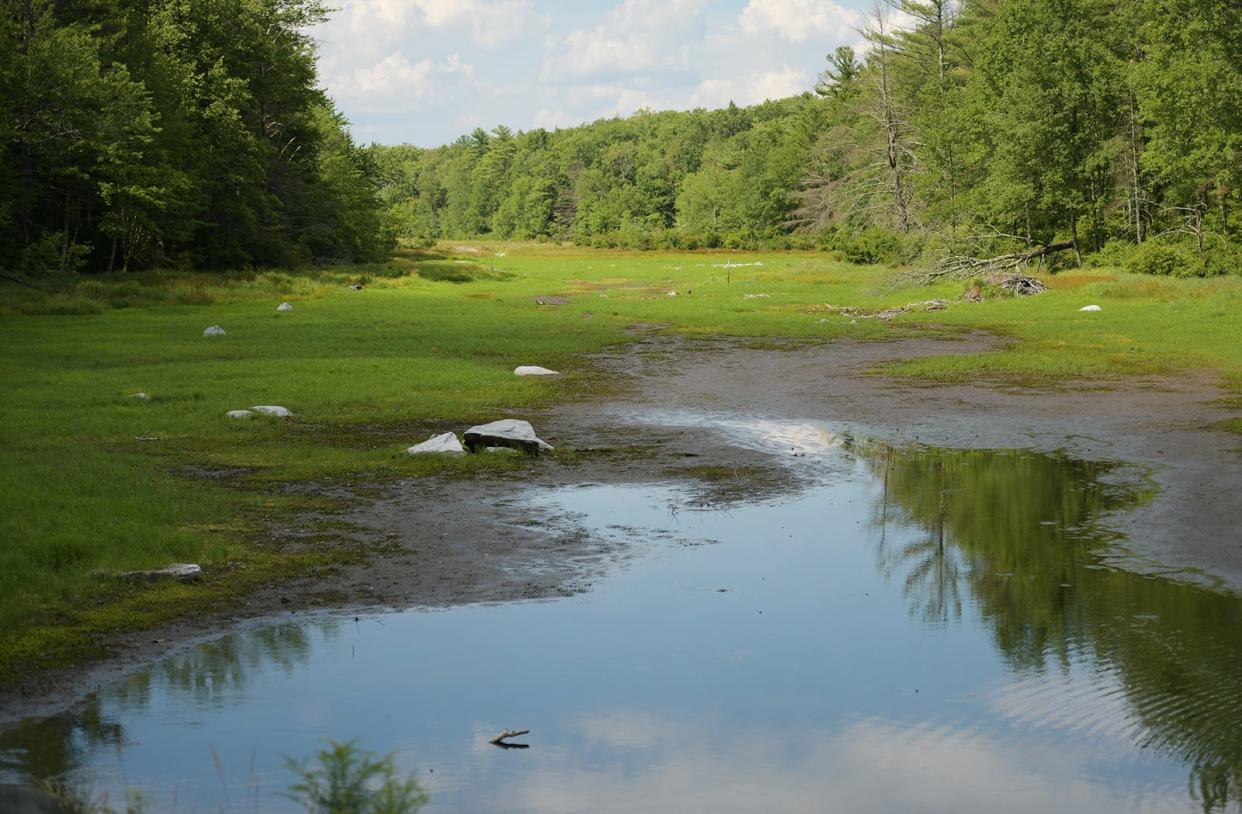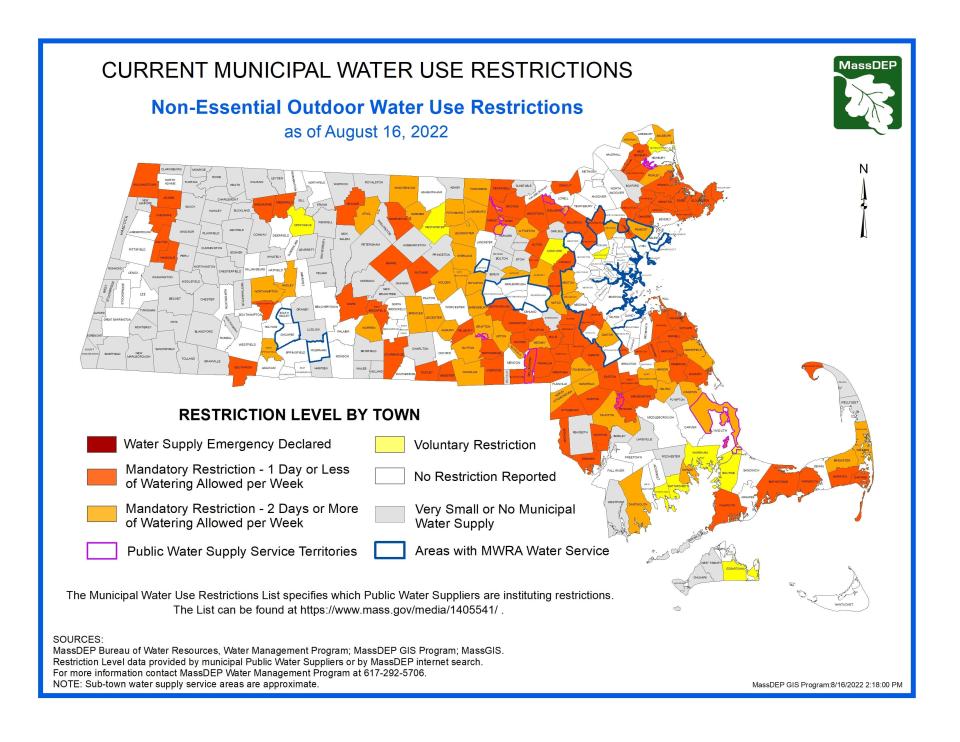Worcester County drenched with outdoor water use restrictions as drought rages on

In response to this year’s unforgiving drought, municipalities across the state have turned to outdoor water use restrictions to preserve water.
On Tuesday, the Massachusetts Department of Environmental Protection published an updated list that showed the following Worcester County communities had limited outdoor water use to one day a week: Barre, Blackstone, Dudley, Milford, Millbury, Northbridge, Rutland, Sturbridge, Templeton, Uxbridge, Webster, West Brookfield and Westborough.
In the following communities outdoor water use is also restricted, but is allowed at least two days a week: Athol, Auburn, Boylston, Douglas, Fitchburg, Gardner, Grafton, Holden, Hopedale, Leicester, Leominster, Lunenburg, Spencer, Sterling, Sutton, Shrewsbury, Upton, Warren, West Boylston and Winchendon.

“Water restrictions or bans during #drought & other #water emergencies are necessary for public health, safety & welfare,” the DEP wrote in a tweet.
While Worcester has not imposed water restrictions, it is expected to enter stage 1 drought status by the end of the month.
On Aug. 9, Phil Guerin, director of the Worcester water and sewer operations, asked city residents to be more mindful of water use, after the city’s 10 reservoirs were measured to be at 78.4% of its capacity.
“We want people to start thinking about water conservation at any time,” Guerin said. “You can sweep your driveway and sidewalk if you want to get the leaves as opposed to hosing it down.”
This year, the drought emerged after a string of lower-than-normal rainfall in the last six months was punctuated in July with minimal precipitation and high temperatures.
The situation prompted increasingly concerned reactions by the state agency Energy and Environmental Affairs throughout the summer.
In mid-July, the EEA announced that the state was seeing a drought in 90% of its regions, with only Cape Cod not affected.
The drought worsened in time, and the EEA designated on Aug. 9 a Critical Level 3 Drought in the Central, Connecticut River Valley, Northeast and Southeast Regions.
The Cape Cod Region was placed under Significant Level 2 Drought, while a Mild Level 1 Drought was placed across Western and Islands Regions.
The EEA urged communities in Level 3 Critical Drought, such as Central Massachusetts, to ban all nonessential outdoor water use.
“The commonwealth is experiencing decreasing levels in some reservoirs, dry streambeds, ponding, and diminished extent of streams in many watersheds leading to lack of flow, increased turbidity, higher water temperature, and increase in growth of plants and algae in the water,” wrote the EEA in an announcement. “As the summer continues and low precipitation couples with high temperatures, it is incredibly important that outdoor watering be limited to essential uses to reduce the strain on local water systems.”
See the DEP's full list of cities and towns with restrictions across the state: https://www.mass.gov/doc/current-water-use-restrictions-list-aug-16-2022/download
This article originally appeared on Telegram & Gazette: Outdoor water use restrictions Worcester County on Tuesday critical drought Massachusetts

